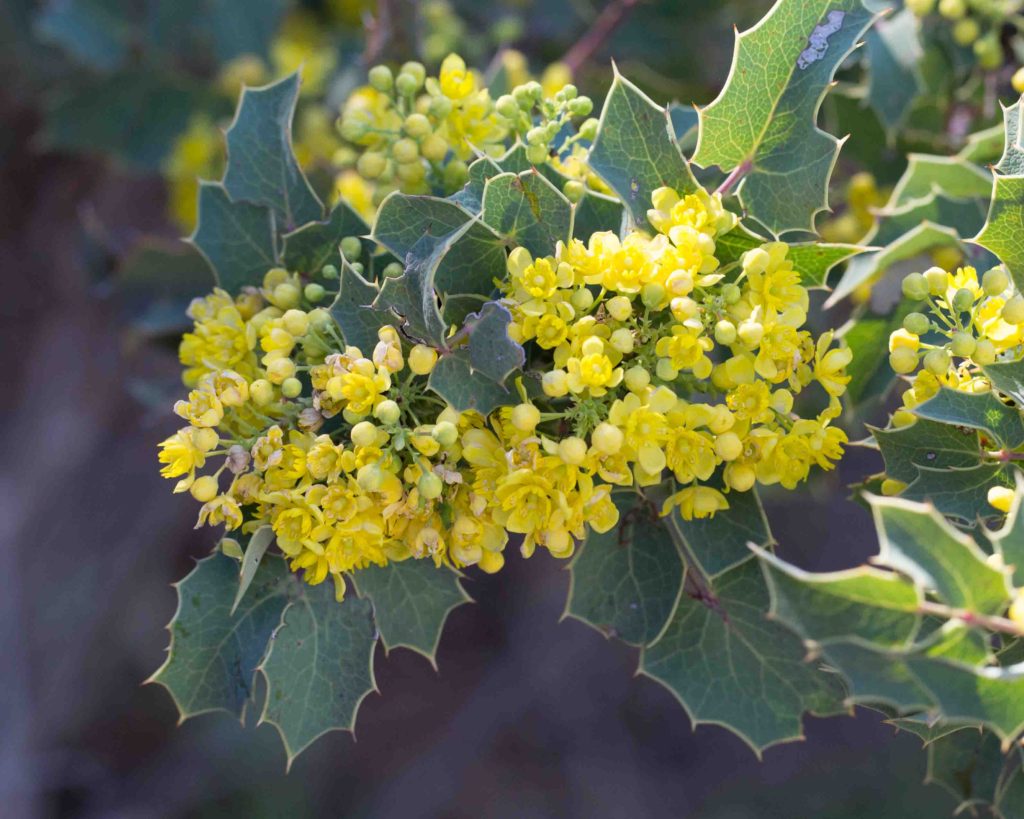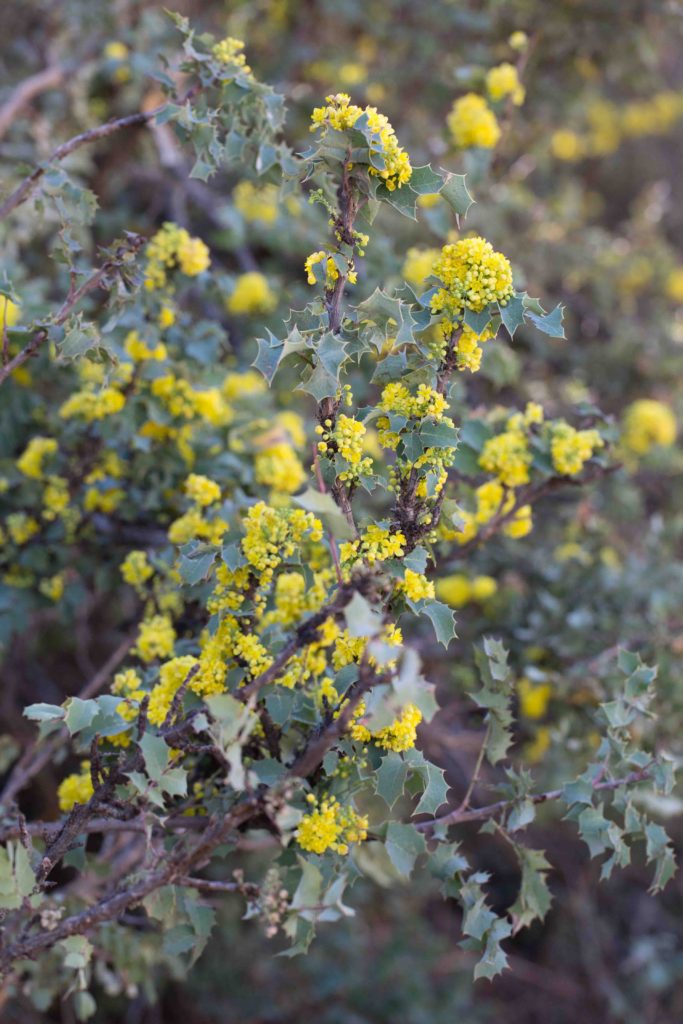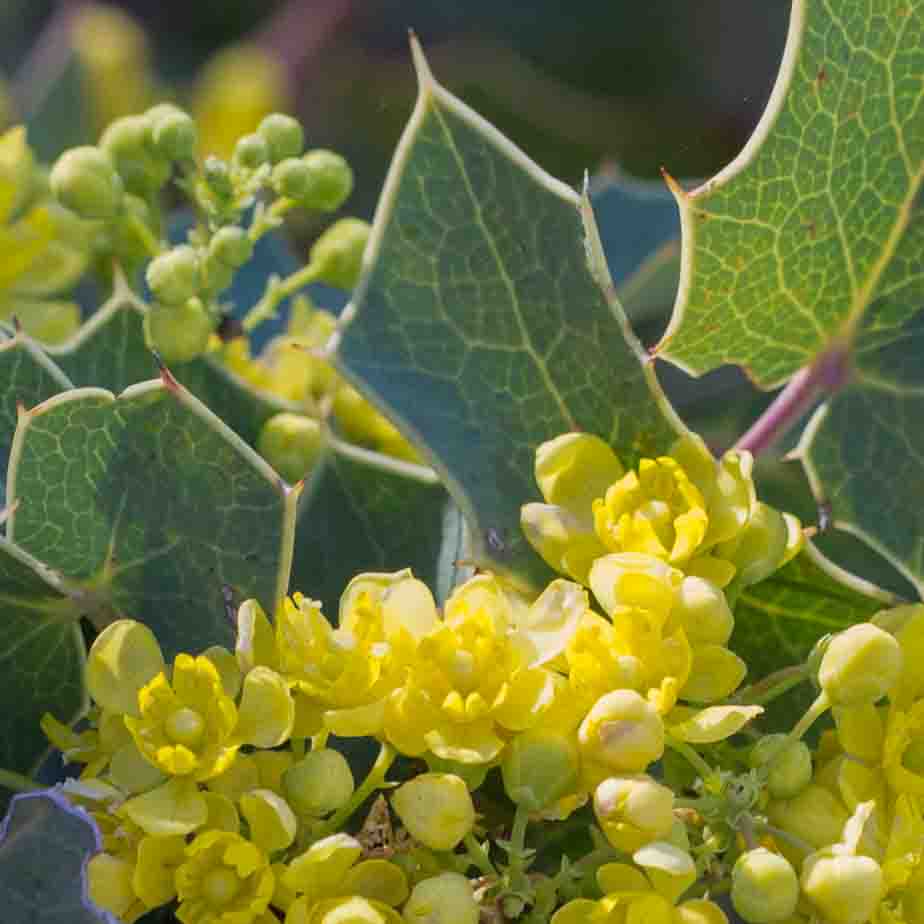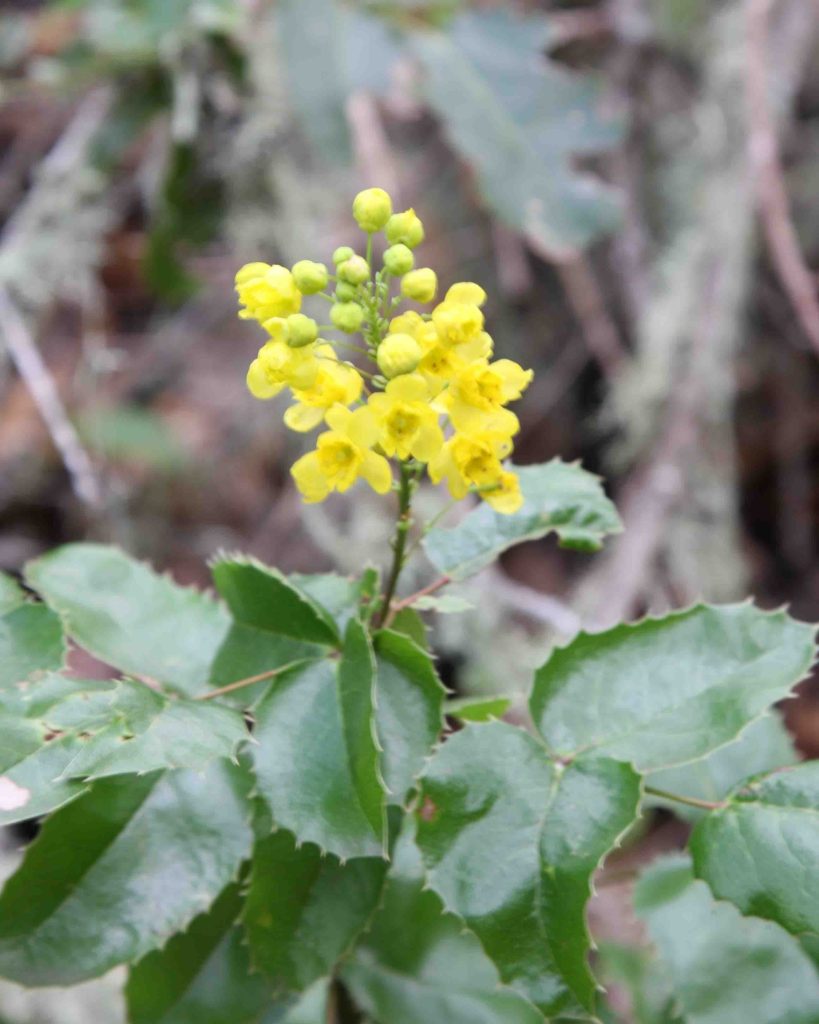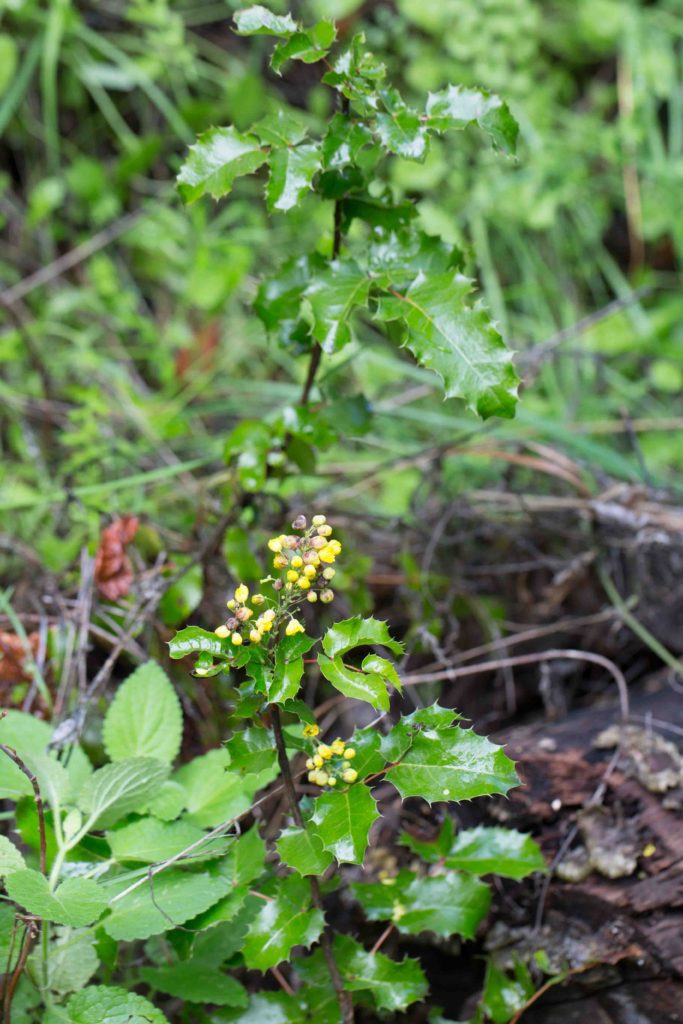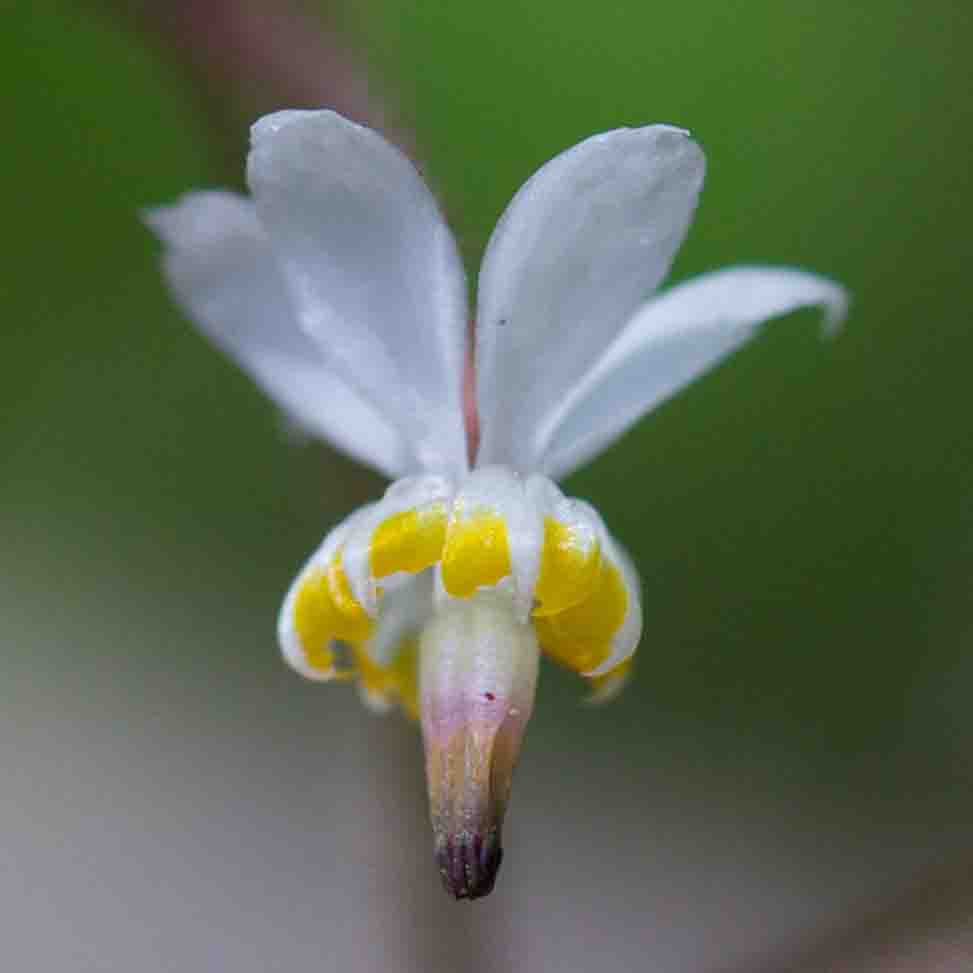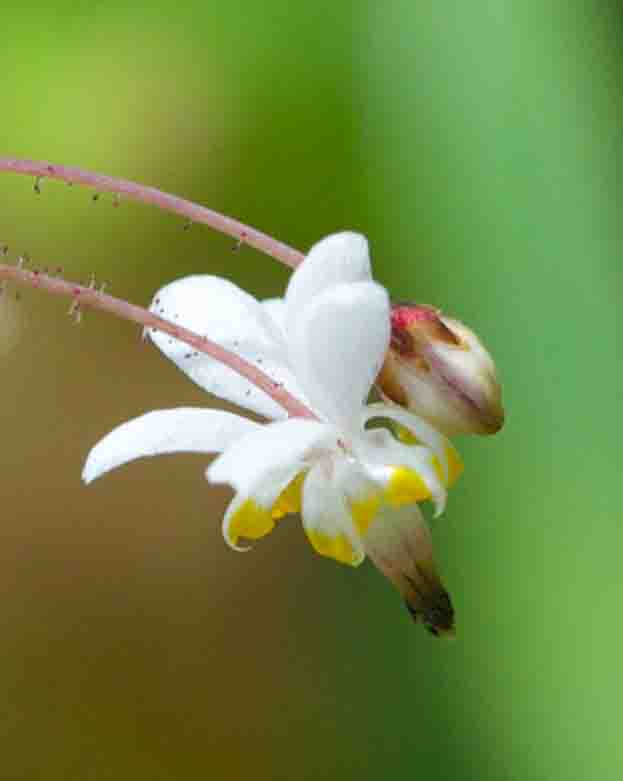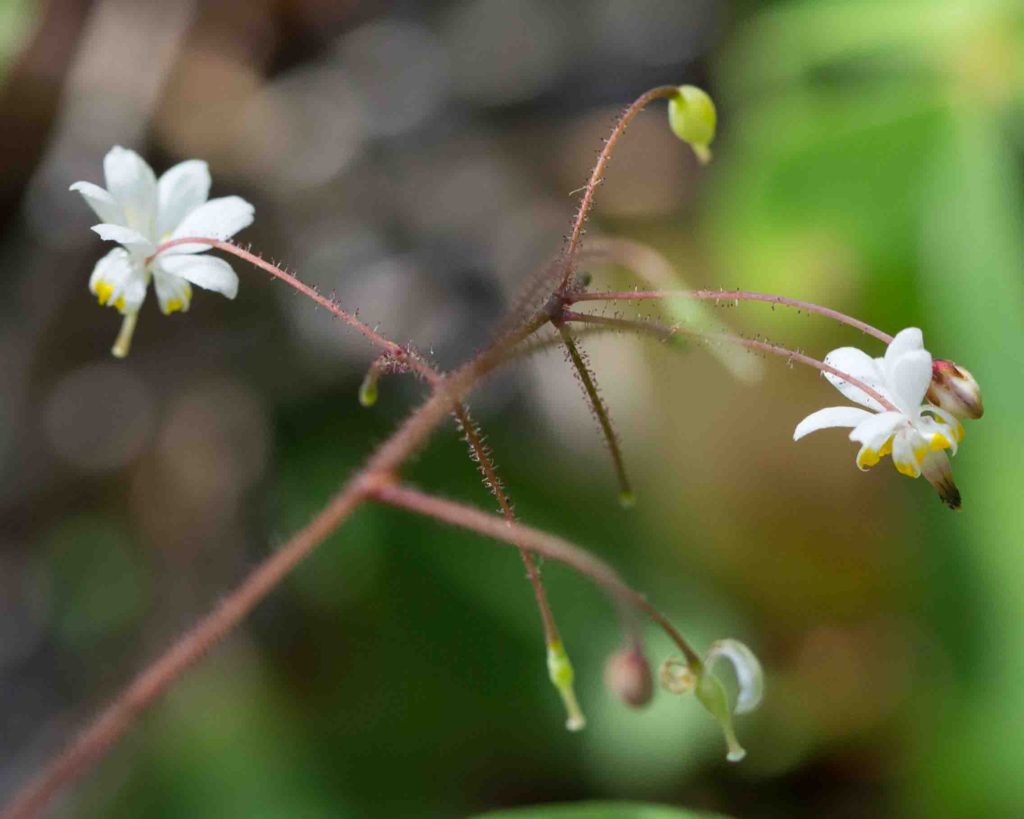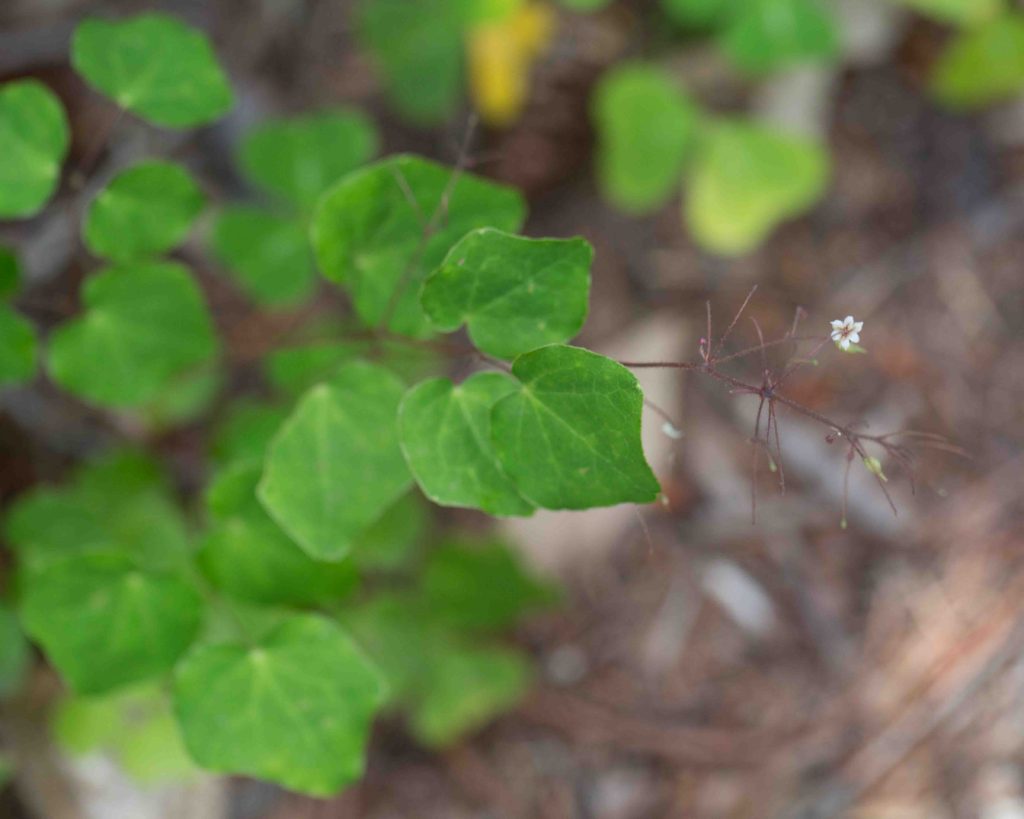Berberidaceae: Barberry Family
The Barberry family includes the eponymous barberries (closely related to the cultivated Mahonias). It also includes the completely different Inside-out Flower or Redwood Ivy, for reasons that would be clear only to professional botanists. Barberries can be tricky to identify with certainty. Jepson’s Barberry appears to be confined to the southeastern part of the county, whereas the California Barberry is more common on the Monterey Peninsula. But there are plants found on the Peninsula that in seem to share features of both, so one needs to be cautious about identification.
Jepson’s Barberry – Berberis aquifolium var. dictyota
Blooms:
Mar–May
Plant Height:
up to 1 m
Flower Size:
Medium cluster
Origin:
Native
Habitat:
Slopes, canyons, coniferous or oak woodland, chaparral, mainly Priest Valley, ? also in Carmel Valley
Notes:
A shrub with leaves that are holly-like, dull green above and about as prickly. There are generally 7–9 leaflets, with strongly wavy margins, and 6–10 stout teeth on each side. Clusters of bright yellow flowers with 6 petals in 2 series, and 9 sepals in 3 series. Berries are blue to purple.
California Barberry – Berberis pinnata subsp. pinnata
Blooms:
Feb–May
Plant Height:
up to 2 m
Flower Size:
Medium cluster
Origin:
Native
Habitat:
Rocky slopes, canyons, coniferous or oak woodland, chaparral
Notes:
A shrub with leaves that are holly-like, but less prickly. There are 7–11 leaflets with thin, wavy margins and 15–23 teeth on each side. Clusters of bright yellow flowers with 6 petals in 2 series, and 9 sepals in 3 series. Berries are blue to purple.
Inside-out Flower / Redwood Ivy – Vancouveria planipetala
Blooms:
Apr–July
Plant Height:
15–50 cm
Flower Size:
Small
Origin:
Native
Habitat:
Coastal conifer woodlands
Notes:
This unusual-looking flower has two sets of sepals. The outer ones are brownish and visible on the unopened buds, bract-like and deciduous; and the larger inner ones are white, petal-like and curved back. The true petals are much smaller than the inner sepals, white with yellow or lavender tips and curved in towards the stamens. Stamens are appressed to the style, reminiscent of Padre’s Shooting Star (Primula clevelandii). The name “Inside-out Flower” comes from the way that the pedicel appears to come from inside the flower, instead of being attached at the base. Leaves are ivy-like, ovate to cordate and 3-lobed.
